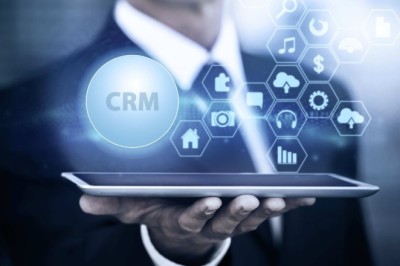views
Written by: Myrtle Bautista

Image source: Marc Mueller
Several factors in the past few years have changed the way we work. Before, working was confined to going into an office for 8 hours and returning home when the day was over.
However, events like the COVID-19 pandemic have fast-tracked a worldwide transition to remote and hybrid work models. What began as a temporary shift to remote work quickly evolved into a long-term embrace of hybrid models.
With these changes come new expectations for how we work. As a result, the modern workplace is changing. There is now a significant shift from makeshift home setups to fully optimized smart offices equipped with intelligent tools and adaptive environments.
How Remote Survival Became Smart Offices
Between 2020 to 2022, there was a major change in the way people work. Organizations and businesses had to find the best way to continue operations.
This is where the rise of remote work came in. Although remote work was already widely adopted in many industries, this setup didn’t see a global-scale shift until the pandemic made it a necessity.
At first, the change was all about necessity. Managers and employees had to make do with their work laptops from their homes. Many didn’t even have home offices, so they had to use makeshift desks or take video calls from their bedrooms.
But as months turned into years, companies began investing in more permanent solutions. The goal shifted from simply getting work done remotely to creating smarter, more efficient ways of working.
This evolution led to the rise of the smart office: a workspace powered by integrated technology, intelligent systems, and flexible design. What began as remote survival has now become the blueprint for the future of work.
What Defines a Smart Office in 2025?
The modern smart office goes far beyond sleek furniture and open layouts. In 2025, it’s defined by a deeply integrated ecosystem of technology designed to make workspaces more adaptive, efficient, and human-centered.
Internet of Things
No smart office can function without the right backbone: high-speed, reliable internet. It’s the foundation that allows interconnected devices to communicate in real time and respond instantly to changing conditions.
At the core are interconnected devices powered by the Internet of Things (IoT). These sensors and systems continuously monitor various environmental and operational factors.
Monitoring factors like air quality, lighting, temperature, and occupancy levels help create a workspace that automatically caters to user needs. As a result, organizations can make smarter decisions about how space is utilized.
Artificial Intelligence
Additionally, artificial intelligence (AI) also plays an integral part in many organizations. AI tools now assist with streamline task management that help employees instantly find information or troubleshoot tech.
AI also steps in to keep things running smoothly behind the scenes. For example, it can spot tech issues before they become problems. AI can even help teams collaborate better by recommending tools or resources based on what they’re working on.
Cybersecurity Innovations
Cybersecurity is a top priority in smart offices. Modern smart offices utilize connected technologies to streamline operations and enhance the employee experience. A great example of this is biometric logins. Through fingerprint or facial recognition, employees can easily and safely access their devices and systems.
AI-powered threat detection tools also work around the clock. Many organizations make use of these tools to spot unusual activity or potential breaches before they cause problems.
5G and Edge Computing
High-speed connectivity is the fuel that powers every smart office system, and 5G is taking it to the next level. Traditional networks often struggle to keep up with the massive flow of data generated by smart devices.
However, 5G changes the game because now, smart offices can gain ultra-fast, low-latency connections that make real-time responsiveness possible.
Benefits of the Smart Office Shift
The move toward smart office environments can unlock meaningful improvements in how teams function and how businesses operate. Here are some of the top benefits of this shift:
- Boosted Productivity and Employee Well-Being: Smart offices remove friction from the workday, which means employees can focus more on high-value work. The addition of ergonomic setups and wellness-focused design features also contributes to healthier, more comfortable work environments.
- Real-Time Collaboration Across Global Teams: Integrated communication platforms and shared digital workspaces makes seamless collaboration easier, regardless of location. Teams can brainstorm and manage projects in real time.
- Lower Energy Use and Operating Costs: Automation helps reduce unnecessary energy consumption. For instance, it can adjust lighting and power usage based on occupancy. These efficiencies not only support sustainability goals but also cut overhead costs over time.
- Smarter Planning Through Data: With access to analytics and usage trends, organizations can make data-driven decisions. This helps optimize operations and better support hybrid or flexible work models.
The Bottom Line
The workplace has come a long way since the reactive home office setups of 2020. Today, the focus is on building smarter, more flexible environments that help people do their best work.
The smartest offices moving forward will be the ones that use innovation with intention and always keep people at the center. With the right tech in place, teams can stay connected, productive, and supported.






















Comments
0 comment